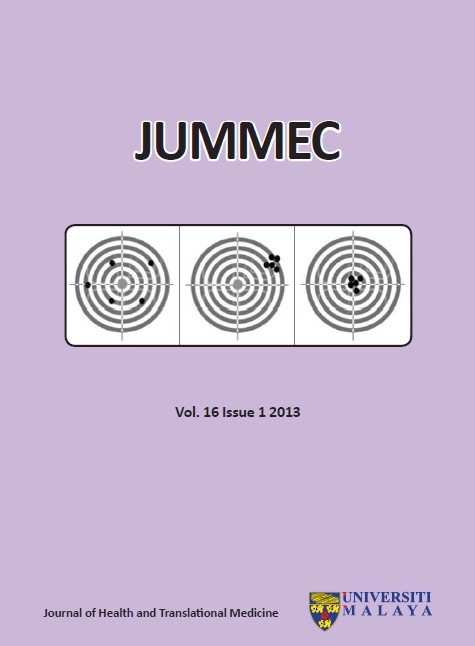METHOD COMPARISON STUDIES IN MEDICINE
Abstract
INTRODUCTION AND OBJECTIVE:
Most of important variables measured in medicine are in numerical forms or continuous in nature. New instruments and tests are constantly being developed for the purpose of measuring various variables, with the aim of providing cheaper, non-invasive, more convenient and safe methods. When a new method of measurement or instrument is invented, the quality of the instrument has to be assessed. Agreement and reliability are both important parameters in determining the quality of an instrument. This article will discuss some issues related to methods comparison study in medicine for the benefit of medical professional and researcher.
METHOD:
This is a narrative review and this article review the most common statistical methods used to assess agreement and reliability of medical instruments that measure the same continuous outcome. The two methods discussed in detail were the Bland-Altman Limits of Agreement, and Intra-class Correlation Coefficient (ICC). This article also discussed some issues related to method comparison studies including the application of inappropriate statistical methods, multiple statistical methods, and the strengths and weaknesses of each method. The importance of appropriate statistical method in the analysis of agreement and reliability in medicine is also highlighted in this article.
CONCLUSION:
There is no single perfect method to assess agreement and reliability; however researchers should be aware of the inappropriate methods that they should avoid when analysing data in method comparison studies. Inappropriate analysis will lead to invalid conclusions and thus validated instrument might not be accurate or reliable. Consequently this will affect the quality of care given to a patient.
Downloads
Downloads
Published
Issue
Section
License
All authors agree that the article, if editorially accepted for publication, shall be licensed under the Creative Commons Attribution License 4.0 to allow others to freely access, copy and use research provided the author is correctly attributed, unless otherwise stated. All articles are available online without charge or other barriers to access. However, anyone wishing to reproduce large quantities of an article (250+) should inform the publisher. Any opinion expressed in the articles are those of the authors and do not reflect that of the University of Malaya, 50603 Kuala Lumpur, Malaysia.


